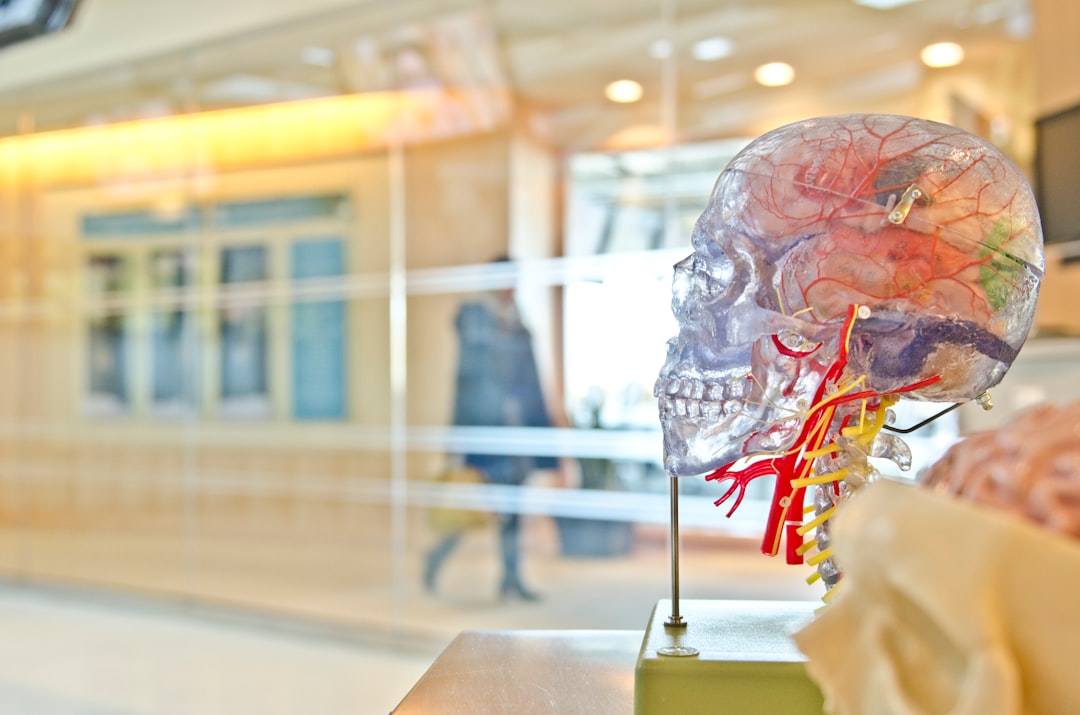Bipolar Disorder Understanding the Spectrum of Mood Fluctuations in 2024
Bipolar Disorder Understanding the Spectrum of Mood Fluctuations in 2024 - Expanding Definition of Bipolar Spectrum Disorders in 2024
The understanding of bipolar spectrum disorders is undergoing a significant transformation in 2024, moving beyond rigid diagnostic categories towards a more nuanced view of mood experiences. The focus is increasingly on the spectrum itself, acknowledging that individuals can present with a wide range of mood patterns and fluctuations. Concepts like "predominant polarity" and the "affective spectrum" are gaining traction, offering a framework to categorize individuals based on the specific types of mood episodes they experience. This shift highlights the variability within bipolar disorder, recognizing that not everyone fits neatly into traditional diagnostic boxes.
Furthermore, the development of tools like the Bipolarity Index suggests a growing recognition that bipolar disorder may manifest in subtler ways, potentially impacting individuals who haven't traditionally met the criteria for a formal diagnosis. This approach to understanding the disorder's spectrum pushes clinicians to consider a wider range of presentations, particularly those individuals experiencing mood instability without clear-cut manic or depressive episodes. The emerging field of mood instability metrics may offer a more objective way to identify and manage these subtler expressions of bipolar disorder. It's also becoming clear that bipolar disorder is likely intertwined with other mental health challenges, such as complex trauma, and is influenced by a range of biological factors, pushing researchers to investigate the complexities of this multifaceted disorder. Ultimately, these shifts necessitate a more flexible and adaptable clinical approach to address the diverse needs of individuals navigating the intricacies of bipolar spectrum disorders.
The landscape of bipolar spectrum disorders is undergoing a significant shift in 2024. We're seeing a move beyond the traditional, rigid boundaries of bipolar I and II, with a wider embrace of conditions like cyclothymia and other nuanced mood fluctuations previously seen as separate entities. This expanded view acknowledges that bipolarity isn't always a matter of dramatic highs and lows, but can include subtler variations that still have a profound impact on daily life and overall well-being.
The concept of rapid cycling—characterized by frequent shifts in mood—has gained traction, reflecting a greater awareness of the dynamic nature of the spectrum. Additionally, the presence of mixed episodes, where manic and depressive symptoms intertwine, challenges our understanding of how these disorders manifest. These observations are prompting researchers to re-evaluate the neurobiological underpinnings of bipolar disorder, exploring how brain activity patterns might differentiate subtypes and suggest a greater complexity than initially thought.
Genetic research is unveiling potential shared genetic roots between bipolar disorder and other mood disorders, which might lead to a rethinking of how these conditions are categorized and understood. This increased understanding of shared biological factors highlights the need for personalized care approaches. Treatment plans must acknowledge the diversity within the spectrum, recognizing that various subtypes might respond differently to different interventions.
Furthermore, it's becoming increasingly apparent that external influences play a substantial role in bipolar spectrum disorders. Clinicians are paying more attention to the effects of environmental factors and lifestyle choices on the course of the illness. Moreover, cultural contexts are recognized as having an impact on how bipolarity is understood and experienced, leading to calls for more culturally sensitive diagnostic methods.
The current debates surrounding the classification and diagnosis of mood disorders emphasize that the evolution in our understanding of bipolarity is far from over. It's likely that the criteria used to diagnose these conditions will continue to be refined in the coming years as research progresses and the complexity of the bipolar spectrum becomes further illuminated.
Bipolar Disorder Understanding the Spectrum of Mood Fluctuations in 2024 - Neurotransmitter Dysregulation and Mood Fluctuations
Bipolar disorder's hallmark mood swings are significantly influenced by imbalances in neurotransmitter activity. Specifically, the brain's chemical messengers, particularly those within the biogenic amine family, play a critical role in managing emotions, sleep patterns, appetite, and even cognitive abilities. When these neurotransmitters become dysregulated, it contributes to the fluctuating and often persistent mood states individuals with bipolar disorder experience throughout their lives. This disruption to the intricate chemical communication within the brain is a cornerstone of the disorder, and its impact is widespread, contributing to a range of symptoms and difficulties.
It's important to acknowledge that this is a complex interplay of factors. Neurobiological aspects alone don't fully explain bipolar disorder. The relationship between brain chemistry and environmental factors, such as stress and social interactions, remains a key area of study. Researchers recognize that understanding this dynamic relationship is crucial for developing more effective treatments that address both the biological and social factors impacting individuals with the disorder. Only by grasping this complexity can we create interventions that truly make a difference in managing the multifaceted nature of bipolar disorder and the associated mood fluctuations.
The intricate dance of neurotransmitters, particularly serotonin, dopamine, and norepinephrine, plays a central role in the mood fluctuations seen in bipolar disorder. These chemical messengers are vital for regulating our emotions and maintaining a stable mood. When their levels or activity become imbalanced, whether too high or too low, it can significantly disrupt mood, contributing to the characteristic symptoms of bipolar disorder.
The brain's reward system, heavily reliant on dopamine, can become overly active during manic phases, essentially amplifying the 'feel-good' sensations associated with rewards. This can lead to risky behaviors and an intense pursuit of pleasurable experiences, often with little consideration for the potential consequences. Understanding this mechanism is crucial to developing strategies for managing impulsive behavior during manic states.
Interestingly, the gut-brain axis is gaining attention as a potential modulator of mood fluctuations. Research suggests a connection between the gut microbiome and neurotransmitter levels. Could a healthy gut be a contributing factor in preventing or mitigating mood swings? Further research is needed to fully unravel this complex relationship.
Chronic stress, a common experience in modern life, can also disrupt neurotransmitter balance and the brain's capacity for change (neuroplasticity). The body's stress response system (HPA axis) can become chronically activated, leading to a cycle of heightened stress and mood instability. It's like a feedback loop that sustains and amplifies mood fluctuations.
Brain imaging techniques are giving us a peek into the neural underpinnings of bipolar disorder. These methods reveal altered connections in brain regions associated with emotional regulation in people with the disorder. Identifying these patterns could lead to a better understanding of what drives mood instability and, hopefully, novel intervention strategies that target these specific brain networks.
Sleep disruptions and irregularities in our natural circadian rhythms have a noticeable impact on neurotransmitter regulation. It's a recurring theme that sleep problems often coincide with bipolar disorder, contributing to a cycle where disrupted sleep exacerbates mood swings. Addressing sleep problems may be a key strategy in stabilizing mood in these individuals.
Nutritional deficiencies, particularly involving omega-3 fatty acids and certain B vitamins, have been linked to mood disorders. This underscores the importance of a balanced diet in supporting healthy neurotransmitter function. It seems that what we consume can influence the trajectory of mood fluctuations in people with bipolar disorder.
Lithium, a commonly used mood stabilizer, is believed to impact neurotransmitter levels, possibly by enhancing the activity of serotonin. This potential mechanism could partially explain why lithium can reduce the severity and frequency of mood swings in bipolar disorder.
Hormonal fluctuations, particularly those associated with women's reproductive health, can interact with neurotransmitter systems, leading to significant mood shifts. This includes connections between menstrual cycles, pregnancy, and postpartum periods. Clearly, treatment approaches need to be tailored to different genders and stages of life.
Emerging research suggests that inflammation may play a role in mood regulation, potentially through inflammatory molecules (cytokines) that disrupt neurotransmitter pathways. This highlights the potential involvement of the immune system in mood disorders and could open the door for new therapeutic approaches that target both inflammation and mood stabilization.
Bipolar Disorder Understanding the Spectrum of Mood Fluctuations in 2024 - Dynamic Brain Activity Patterns in Bipolar Patients
The brains of individuals with bipolar disorder exhibit dynamic activity patterns that differ significantly across mood states. Advanced neuroimaging tools have revealed changes in how brain regions communicate with each other, especially those involved in controlling emotions and managing responses to stimuli. These changes in brain network activity are particularly pronounced when comparing mood states like depression and periods of stability (euthymia), suggesting a link between these patterns and emotional instability, as well as problems with thinking and decision-making. The fact that these patterns differ from person to person hints at the complexity of bipolar disorder, implying that individuals might show unique brain activity signatures that reflect the specific way their mood episodes manifest.
This research on brain dynamics in bipolar disorder has the potential to unlock crucial biomarkers that could help clinicians diagnose the disorder earlier and design interventions that are more tailored to each individual's specific brain activity patterns. However, it's still early days. Much work remains to fully comprehend these intricate neural processes. Still, it's a promising area that could dramatically improve our ability to understand and treat bipolar disorder in the future, leading to more precise and personalized therapeutic strategies.
Individuals with bipolar disorder display unique patterns of brain activity, particularly in networks involved in managing emotions and mood regulation, even when they're at rest. These altered patterns, observed through brain imaging, might provide clues to why bipolar disorder presents with such unpredictable swings in mood.
Bipolar disorder is a complex condition with varied symptoms and co-occurring disorders, leading to significant challenges in individuals' lives. This variability makes it challenging to find reliable early indicators, underscoring the importance of further understanding the disorder's neurobiology.
Researchers are studying the dynamic nature of mood changes in bipolar disorder using methods like dynamical degree centrality (dDC), hoping to map out how whole-brain patterns change across different moods. It's a bit like tracking a fluctuating electrical signal, attempting to understand the distinct brain signatures of each mood state.
Bipolar disorder impacts a considerable portion of the global population, being a leading cause of disability due to its cyclical nature. The condition is marked by distinct phases of depression, hypomania, and mania, each with its own set of symptoms and challenges.
There's growing evidence that the structure and function of brain connections are abnormal in bipolar disorder. This altered brain connectivity could play a crucial role in the cognitive and behavioral difficulties associated with the condition, influencing everything from decision-making to emotional responses.
Defined by intense shifts between opposing mood states, bipolar disorder involves episodes of depression and elevated manic phases characterized by increased energy and reduced sleep needs. It's like the brain is caught in a perpetual tug-of-war between opposing emotional states, and we're trying to understand the circuitry behind it.
Depressive episodes are the most frequent presentation in bipolar disorder, often leading to a tendency to dwell on negative thoughts and experiences. This negative bias during depressive phases creates a significant challenge for patients, further highlighting the need for treatments that can effectively manage these periods.
Research using dynamic functional connectivity shows that the way different parts of the brain communicate varies based on the patient's current mood. This is particularly apparent when comparing depressive and stable periods, hinting at the dynamic nature of brain activity in bipolar disorder.
Interestingly, researchers are finding similarities and differences in brain activity patterns between bipolar disorder and other mood conditions like major depressive disorder. This overlap suggests that these conditions might share some underlying neurobiological mechanisms, creating a fascinating puzzle to explore.
It appears that the very way the brain's intrinsic networks operate is disrupted in bipolar disorder. This emphasizes the complexity of the disorder and suggests that there may be common pathways leading to a range of mood-related conditions.
Bipolar Disorder Understanding the Spectrum of Mood Fluctuations in 2024 - Metrics for Measuring Mood Instability and Outcomes
The field of bipolar disorder is undergoing a shift in 2024, with a growing emphasis on the need for more sophisticated ways to measure mood instability and its impact on patient outcomes. While traditional methods largely focused on reducing the severity of mood episodes, a newer perspective acknowledges that mood instability itself is a significant factor in bipolar disorder. This means looking beyond just the presence of clear-cut manic or depressive episodes and instead paying close attention to the frequency and intensity of mood changes, even those that don't reach the threshold for a full-blown episode.
Researchers believe that better measurement tools for mood instability could significantly improve clinical care. By being able to more accurately quantify and categorize individuals based on their unique patterns of mood fluctuations, clinicians can potentially tailor treatments more effectively. This approach is particularly important because it's now becoming clearer that mood instability, even outside of recognized mood episodes, is associated with poorer outcomes, impacting a person's overall functioning and increasing the risk of hospitalization.
The development of new metrics to capture these nuances in mood is still in its early stages. However, the hope is that they will provide a much more detailed picture of how bipolar disorder manifests in different people, leading to better understanding and improved management. The ultimate goal is to improve early interventions for those at risk and to develop treatments that are more finely tuned to specific patterns of mood instability, thereby improving the long-term prognosis for individuals experiencing the complexities of bipolar disorder.
Mood instability is a core aspect of bipolar disorder (BD), influencing its development and contributing to unfavorable outcomes. While traditional clinical practice focuses on preventing and resolving mood episodes, measuring treatment success through symptom reduction, a new perspective on gauging mood instability is emerging, with potential for better patient categorization based on the nature of their mood fluctuations. This change in approach is driven by the recognition that mood instability itself can cause considerable harm, leading to increased hospital stays and involuntary admissions. Research suggests that even mood changes outside of formal mood episodes predict poor health and diminished daily functioning in individuals with BD.
A recent study, involving a mix of individuals with BD, other non-mood related disorders, and a healthy control group, is rethinking how we understand and assess mood instability in clinical settings. Interestingly, this instability doesn't appear to be a predictor of unipolar disorders, according to longitudinal studies. Innovative ways of monitoring mood changes offer a deeper understanding of personal experiences with BD, potentially impacting treatment decisions. Early detection and management of mood instability could improve outcomes for people at risk of developing BD. 2024 marks a growing understanding of the complexity of mood fluctuations, calling for more sophisticated tools to track these variations effectively during trials and treatment procedures. While there are strides being made, it is still early days in this field. There's much we don't know yet, and it is unclear if these new measurement approaches will truly change the lives of patients, but the initial prospects are promising.
It's intriguing that the connection between sleep patterns and mood instability is coming into sharper focus. One might wonder how easily quantifiable sleep data, which can already be measured with some level of accuracy with inexpensive wearables, can influence mood-related diagnoses or treatments. There is also growing evidence about a connection between inflammation and mood, a connection that could suggest new treatment strategies that target this system directly. The idea that both genetic predisposition and cultural biases can play a significant role in how we perceive and measure mood adds another layer of complexity, emphasizing the need for further research and perhaps different tools to accurately capture such nuanced experiences. It is important that new measurement tools account for these factors as they develop if they are to be effective across the diverse population of individuals experiencing BD.
It seems like this current wave of research has a focus on refining existing methods like Cognitive Behavioral Therapy (CBT), attempting to quantify how the specific techniques of CBT improve mood stability in a measurable way. This would be an important development for both researchers and patients, providing more specific ways to track progress and personalize interventions. While the effectiveness of CBT is established through decades of use, it's unclear whether the quantitative measures being developed will truly add something valuable to the field, particularly for patients. We should continue to be curious and observe the scientific validity of these tools before endorsing them.
Bipolar Disorder Understanding the Spectrum of Mood Fluctuations in 2024 - Global Prevalence and Recognition as a Serious Biological Condition
Bipolar disorder's widespread impact is increasingly recognized in 2024, with estimates suggesting it affects approximately 1% of the global population, potentially rising to 4% when considering the broader bipolar spectrum. This highlights its status as a significant biological condition that presents a substantial global health challenge. The disorder's burden is particularly notable among younger populations, with studies showing a significant impact on adolescents and young adults. The development of bipolar disorder appears to be a complex interplay of inherited traits and environmental influences, firmly establishing its basis as a biological condition with serious consequences for physical, psychological, and social functioning.
While awareness of bipolar disorder is improving, inconsistencies in the quality of research data from different regions and countries continue to hinder a complete understanding of its true global prevalence and the extent of its effects. This underscores the need for more precise diagnostic criteria and standardized assessment methods. The growing evidence that bipolar disorder shares certain underlying biological mechanisms with other mental health disorders, such as depression and psychotic conditions, strengthens the need for flexible clinical approaches. These approaches must consider the multifaceted nature of bipolar disorder and its diverse presentations, paving the way for more individualized and effective treatments.
Bipolar disorder, a condition characterized by significant mood fluctuations, affects roughly 1% of the global population. However, the true prevalence might be significantly higher due to inconsistent diagnostic criteria and a general lack of awareness, potentially resulting in many individuals going undiagnosed for extended periods. There's growing evidence suggesting that a substantial number of people experiencing mood instability might not fulfill the strict diagnostic criteria for bipolar disorder, implying that a wider understanding of mood dysregulation is needed within healthcare.
Despite increased recognition, the stigma attached to bipolar disorder continues to hinder accurate reporting and diagnosis. Educating both the general public and medical professionals about the spectrum of this disorder remains crucial. Furthermore, the complex interplay with other mental health conditions, including anxiety and attention-deficit/hyperactivity disorder (ADHD), presents a significant diagnostic challenge. Frequently, this leads to misdiagnosis or inadequate treatment for those struggling with bipolar disorder.
Intriguing research exploring the genetic underpinnings of bipolar disorder points towards a heritable component. This means that individuals with a family history of bipolar disorder are more likely to develop the condition. This discovery holds promise for developing potential early identification and screening procedures. However, it's also increasingly clear that environmental elements like trauma and ongoing stress can significantly influence symptom onset or severity in individuals with a genetic predisposition, reinforcing the need for multifaceted treatment approaches.
While understanding of the disorder has advanced, many healthcare systems continue to rely on older diagnostic approaches that fail to fully encompass the breadth of mood variations observed in individuals with bipolar disorder. This disconnect between research and clinical practice creates a barrier to effective care for some. Emerging evidence highlights the profound influence of physiological elements like sleep disorders on the intensity and frequency of mood episodes, advocating for more comprehensive treatment regimens that address these interconnected aspects.
Neuroimaging studies offer insights into altered brain activity patterns in individuals with bipolar disorder. The specific patterns differ significantly between depressive and manic states, creating possibilities for developing more targeted brain-based therapeutic interventions. The concept of personalized medicine in managing bipolar disorder is gaining traction, with researchers advocating for individualized treatment approaches based on genetic factors, neurobiological individuality, and individual life experiences. The need for tailored care that reflects the unique characteristics of each individual is clear, potentially allowing for better outcomes in a challenging area of medicine.
More Posts from psychprofile.io:
- →US Suicide Rates A Comprehensive Analysis of Recent Trends and Demographics
- →Exploring the Efficacy of Transcranial Magnetic Stimulation in Bipolar Disorder Treatment A 2024 Update
- →Understanding Social Anxiety The Hidden Struggle Behind Everyday Interactions
- →The Impact of Climate Change on Mental Health Crises A 2024 Perspective
- →How Draw-A-Person Test Results Vary Across Different Cultural Contexts Analysis of 7 Major Studies
- →The Paradox of Hypermetabolism in Anorexia Recovery Challenges and Management Strategies




